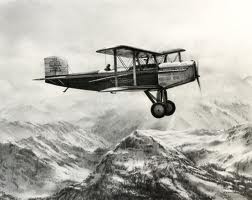
WASHINGTON COUNTY HISTORICAL SOCIETY (Washington County, Utah)
AVIATION HISTORY
HISTORY
The Air Commerce Act was passed in 1926. This landmark legislation charged the Secretary of Commerce with fostering air commerce, issuing and enforcing air traffic rules, licensing pilots, certifying aircraft, establishing airways, and operating and maintaining aids to air navigation. A new Aeronautics Branch in the Department of Commerce assumed primary responsibility for aviation oversight, and William P. MacCracken, Jr., became its first director.With this act, responsibility for establishing a system of lighted airways passed from the Post Office to the new Aeronautics Branch. They planned an air mail route from Los Angeles to Salt Lake City passing through Washington County. It was designated as Contract Air Mail Route 4 (CAM-4). Large concrete arrows were constructed on the ground along the way as visual navigational aids for the planes flying the mail route.
To ensure a federal focus on aviation safety, President Franklin Roosevelt signed the Civil Aeronautics Act in 1938. The legislation established the independent Civil Aeronautics Authority (CAA), with a three-member Air Safety Board that would conduct accident investigations and recommend ways of preventing accidents. The legislation also expanded the government's role in civil aviation by giving CAA power to regulate airline fares and determine the routes individual carriers served.
In 1940 President Roosevelt split the CAA into two agencies, the Civil Aeronautics Administration (CAA), which went back to the Department of Commerce, and the Civil Aeronautics Board (CAB). The offshoot of the original CAA retained responsibility for air traffic control, airman and aircraft certification, safety enforcement, and airway development. CAB responsibilities included safety rulemaking, accident investigation, and economic regulation of the airlines.
PHOTOS
TBDREFERENCES
FAA article on the building of the airwaysA brief history of the Federal Aviation Administration
Paul Freeman's "Abandoned & Little-Known Airfields" Website